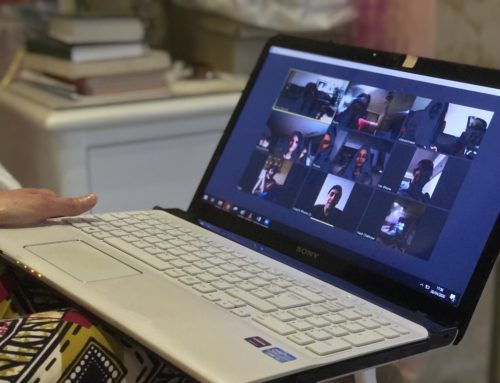
Peter Panepento
I am very excited to welcome Peter Panepento to our distinguished list of regular guest bloggers. Peter will be sharing his wisdom and tips with us monthly on the intersections of media relations, content strategy and social media. ~Kivi
Guest Post by Peter Panepento of Panepento Strategies
I came across an old group photo the other day when I was cleaning out some of my files — a picture of me with about 20 other reporters and editors who had gathered at the University of Maryland for a 4-day training session on how to cover nonprofits.
The photo was taken in June 2007 — less than 8 years ago.
But even though less than a decade has passed, that picture was taken during a completely different era — a time when local newspapers and TV stations actually assigned reporters to cover the nonprofits and foundations in their communities.
Sadly, many of the reporters who stood next to me on that June day are on to other beats, or are out of the business altogether.
What does this mean for nonprofit communicators?
Quite a bit.
Gone are the days when the success of your nonprofit’s public relations efforts were measured by how many times you could get a press release picked up in the local paper or how many mentions you could get on the local TV news.
As the world has changed, the importance of traditional media has waned considerably. The most visible organizations are the ones who are leveraging their own networks and effectively telling their own stories.
Yet many nonprofits are still approaching public relations like it’s 2007.
Communications teams are still busy cranking out old-style press releases and sending them to editors at their local newspapers and television stations hoping that they will pick up their announcements about their fundraising galas, grant awards, and capital campaigns.
And they are often cursing the local paper when it publishes yet another loosely-sourced story about overhead costs and CEO salaries.
This new atmosphere requires charity communicators to think differently about how they approach local media coverage. Yes, there is still value in connecting with local reporters and editors — but the way you approach those relationships should be different.
This means nonprofit communicators should stop:
Taking the ‘Big Check Photo’ — Think about how many times your nonprofit has taken a photo of grinning men and women in suits holding up a big check to showcase a major gift or investment in a new program. Now, think of how many times one of those photos has appeared anywhere other than your website. If you’ve been taking such photos and sending them to the local paper, please stop. Chances are, they’re getting dumped right in the garbage.
Thinking a press release is enough — Press releases have a place in your communications toolkit. But your organization should no longer be sending routine news releases to the news desk at your local newspaper or television station. When reporting teams were larger and news holes were bigger, you could usually count on at least some of your releases hitting pay dirt. Today, that press release is likely to never get opened — regardless of whether you send it by mail or electronically.
Expecting reporters to find you — Not so long ago, a good local reporter would spend time working his or her beat — reaching out to prospective sources and building relationships. Today, those beats are often diffuse, so the amount of time they spend mining the community for good sources is much more limited. For a reporter to know who you are, you need to actively work to build a relationship with her.
Measuring your success by media mentions — While it’s still valuable to get your organization mentioned or profiled in the local media, newspapers and TV are no longer the only games in town. Today’s nonprofit has the opportunity to become its own news service — generating content, connecting with supporters, and getting supporters to speak on your behalf through social media, blogs, e-mail newsletters, and other digital channels.
In my next post, I’ll explore what your organization should start doing to use the changing media landscape to its advantage — and how you can begin to develop your own media voice.
Peter Panepento is principal at Panepento Strategies, a full-service content, digital, and social strategy firm for nonprofits and socially-minded companies. He was formerly an assistant managing editor at the The Chronicle of Philanthropy, where he led its transition into digital journalism and social media — a transition that included the creation of some of the nonprofit world’s richest online communities, the launch of a highly profitable webinar series, and the creation of new digital products such as the How America Gives giving database.





